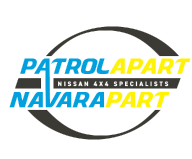Yes, you know with rated recovery points that they will withstand the force you intend to apply to them. Emphasis here on the "intend". Lots badly underestimate the amount of force required to "rescue" a vehicle, especially one that is down to the axles in whatever. Whether you are stuck in sand or mud or ruts, a bit of road building can significantly lessen the recovery forces e.g. by maybe 1/2. One recovery point at the rear or the front of the Patrol might be enough to recover the vehicle, but if it is badly stuck then applying all the recovery force at the one point on a chassis rail risks permanent distortion to the chassis. Spreading the load over two recovery points (front or rear) reduces the force transferred to each during a recovery, especially if used with a bridle chain - the objective is to have each recovery point subject to 1/2 of the force required for recovery. So if you have two recovery points (hooks or plates) rated at say 4 Tonnes then you can safely apply 7 Tonnes to recover the vehicle - a bridle chain will help to evenly distribute that force i.e. 3.5 Tonne to each chassis rail.
It looks like the bolts or screws in the pixs of the recovery plates are high tensile and NOT mild steel (hardware store variety). The safety of the recovery plate installation depends upon fasteners that will not fail and their secure (read "fully tightened", with a tension wrench if need be) fastening to the chassis rails. The price of some high tensile fasteners is a bit of a horror story, but don't compromise. Like with recovery plates or hooks go for higher than necessary rating, rather than under rating.
Not in favour of tow bars, balls, hitches - pintle or otherwise, as recovery points. That is not their intended purpose. Put simply - they are not designed for that use.




 Reply With Quote
Reply With Quote






